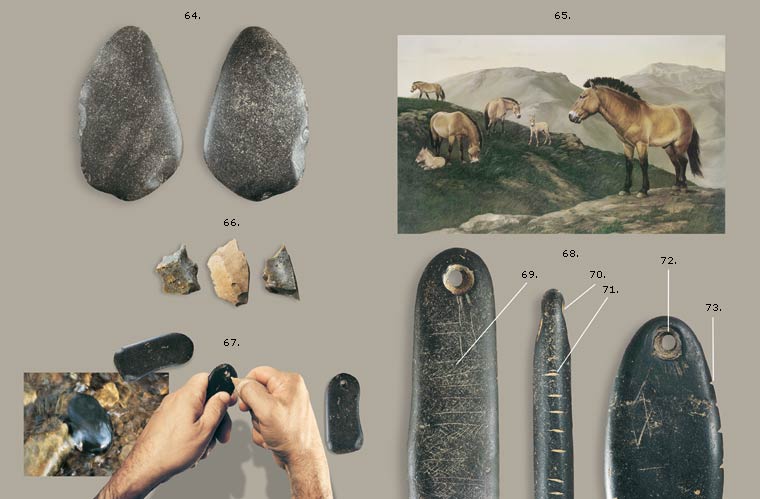The process of
manufacturing pendants.
Whoever occupied the Praileaitz I cave spent many long hours carefully walking the river banks, including the Deba, in search of pebbles of very specific characteristics (suggestive outlines, elongated shapes, dark or black colours, etc.). He or she would then bore a hole in one end. The area to be drilled first had to be readied, sometimes by rubbing the stone down and pricking it to help position the drilling tool and centre the hole. The hole itself was bored from both sides of the stone, using continuous circular movements with a sharp instrument, so that the two orifices finally met in the middle to give a biconical hole. Once the basic pendant had been created, different types of incisions were carved on some of the sides and faces of the stone.
gipuzkoakultura.net


gipuzkoakultura.net
viernes 2 enero 2026
Bertan > The Magdalenian pendants of the Praileaitz I cave(Deba) > Versión en Inglés: The process of
manufacturing pendants
- 6- Ritual activities
- 7- The process of manufacturing pendants
- 8- The groups of pendants
- 9- Who lived in Praileaitz I?

64. Pebble brought to the Praileaitz I cave, of similar characteristics to some of the pendants, but without any manmade alterations. Life size. 65. Modern day Przewalski horses, very similar to those that lived in the environs of the Praileaitz I cave during the Magdalenian period. 66. Stone tools similar to these from the Urtiaga cave would have been used to make the pendants. Different phases in making one of the pendants. 67. Different phases in making one of the pendants. 68. Different kinds of decorative motif from the pendants at Praileaitz I. 69. Incisions in parallel bands. 70. Biconical drilled hole. 71. Series of regular incisions. 72. Front view of a hole. 73. Deep aligned incisions. © Gipuzkoako Foru Aldundia


